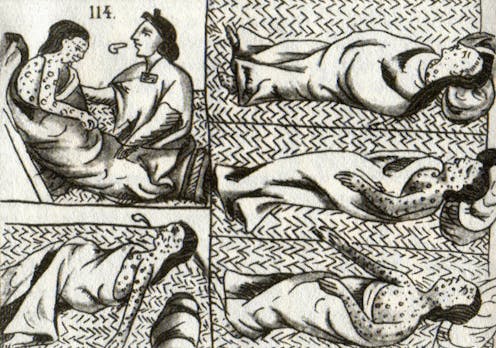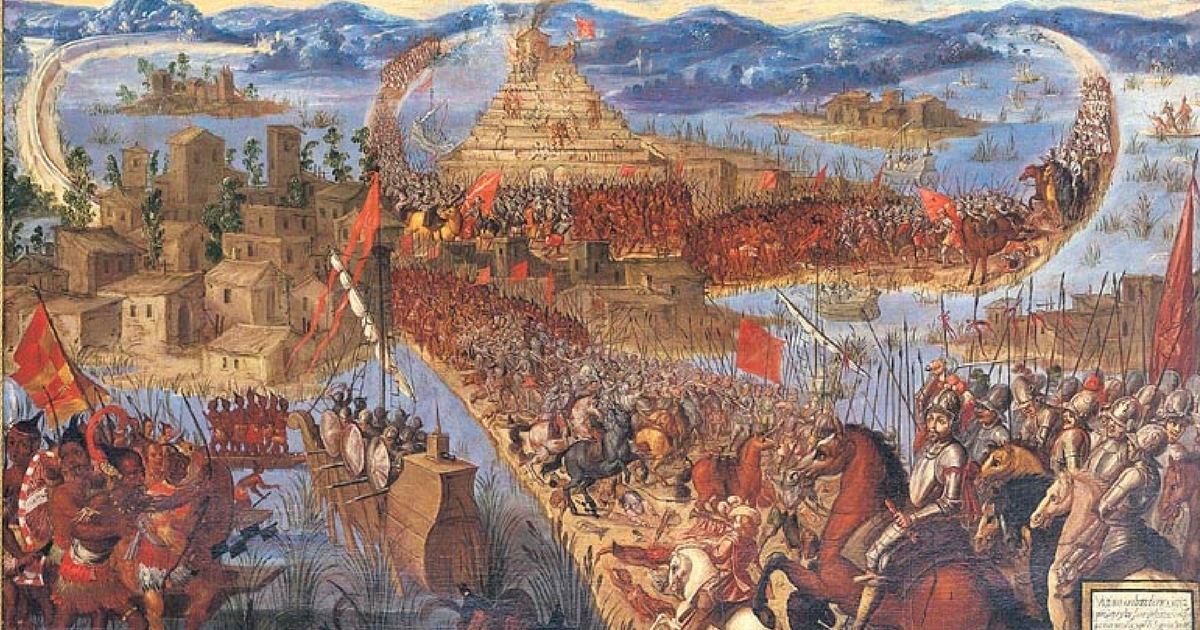Ahliyah Williams
07/22/19
Dr. Hinks
Help Received: None Ahliyah Williams
Cholera is the Shit, Literally!
Societal/ cultural factors have managed to enhance the ability for cholera to spread. Societal factors such as gender dicrimination and the lack of investment for basic sanitation systems has been leading causes throughout the years to how cholera became a pandemic. Cultural effects such as religious public festivals and religion have led to the ability of cholera to spread as a pandemic. Cholera was once a pandemic that spread throughout different countries for years until just recently when cholera became an epidemic resulting from
Socially, gender roles come into play when speaking on the spread of Cholera. In countries such as India, women are subject to rape and assault when they are in need to release themselves. The reason they are so easily targeted is because these women are not in the safety of their own homes, they are literally forced to use the bathroom outside because there are no toilets in the homes of many women in rural India. In an Ad called, #EveryWomansRights, woman are shown verbally attacking a few men that are about to release themselves outside. The indian women in this video are basically trying to get a point across that no man should be able to comfortably use the bathroom outside if a woman is getting assaulted or raped when they have no choice. Something as simple as using the bathroom outside can spread cholera. According to UNICEF, “India has nearly 200,000 diarreheal deaths a year”. Public defecation is a factor to many of those deaths. This becomes a pandemic issue because people across the world are experiencing the same problems. In Africa, most people do not have access to basic sanitation necessities such as toilets. It’s not even a thing that is specific to gender, its among everyone, including men. An article by Lonely Planet says there are two types of toilets in Africa, “The Western style, with a bowl and seat (common in most midrange or top-end hotels and restaurants); and the African style, a hole in the floor that you squat over. You might even find a combination of the two, with a Western-style toilet bowl propped over a hole in the floor.” Cholera among these rural and poor countries are spread so easily by lack of care or investment into basic sanitation systems, such as toilets. Culturally, public events in places like India have led to the spread of cholera. There is a “Festival of Color” in India that is held to gather many people together for the most part bathe in one whole body of water, the Ganges River.. When people are swimming, bathing, etc, in this water they are also peeing or even may defecate. These people believe that they are ‘purifying’ themselves due to their Hinduism beliefs that the water of the Ganges can ban off any bad spirits especially health risks. This makes it extremely harder to help these people. John Snow, a British physician, also known as the “Father of Modern Epidemiology”, was able to find the source of the outbreak of cholera by following cases in London. He was able to get rid of the causes of cholera spread, contaminated water well pumps. That information led him to discover that cholera isn’t just contagious from persons to persons, but by water which gave him the name, “Father of Modern Epidemiology.”
Cholera has managed to become a pandemic. In total there has been seven global pandemics of cholera. It made its way from India to much of Southeast Asia and East Asia. It even spread further than Asia making its way to the Middle-East. A pandemic means that a disease is spread worldwide or over a whole country. still something and even though not a pandemic worldwide its still showing up in africa as an epidemic. Cholera is now an epidemic in Haiti, and endemic in many countries. Hati is a perfect home for Cholera. With Hati being “the most poorest country in the Western Hemisphere”(CNN), it’s no shock to hear that Cholera is attacking it the most. Being the poorest country in the Western Hemisphere means that poor to no sanitation is prevalent, meaning that cholera is bound to spread and stay as an epidemic. Especially when you add that much of haitians food come from water or are cleansed by water that is contaminated. The most updated case of cholera in Haiti is explained by Rebecca Hersher. She says that Haiti’s capital doesn’t even have a sewer system. The fact that sewer systems being contaminated and that Haiti doesn’t even have a sewer system at all just makes it an even better homes for cholera.
In conclusion, the cultural effects such as religious factors and public events has contributed to the pandemic spread of cholera. Also, social factors like gender discrimimnation and implementing basic sanitary systems in the household are both contributions to the spread of cholera worldwide. These are all caused by a multitude of things including high poverty rates especially. Physicians such as John Snow is just one of many people who continuously searched to find The epidemic of cholera in Haiti is still a problem due to Haiti’s very high poverty rate. Sanitation nor clean water is accessible in Haiti making it such a hotspot for cholera to continue to be an epidemic in that country.
References
Cholera in Hati. (CDC).
Toilets. Lonely Planet.
Cleaning up a public health threat- the River Ganges. BMC.
(2017) Cholera. History.com
Facts about Haiti. CNN
EveryWomansRights. Astral Pipes.
 Tuberculosis is a tremendously infectious disease. TB is spread similar to how a cold is, as easy as a cough or even someone singing. Society once saw the deadly disease,TB, as passionate. In the book,
Tuberculosis is a tremendously infectious disease. TB is spread similar to how a cold is, as easy as a cough or even someone singing. Society once saw the deadly disease,TB, as passionate. In the book,  Tuberculosis is a disease that takes advantage of its hosts at their worst times and when something such as HIV is already breaking down a person immune system at rapid rates, TB works with it coherently kill a person. HIV makes a person’s immune system very weak, thats why its name stands for immunodeficiency virus. It literally destroys the very thing that is there to fight off infections, white blood cells. So, when an infectious disease such as tuberculosis comes to an HIV infected person, it is welcomed in by the body. TB is an opportunistic infectious disease meaning that it takes the opportunity of the body whenever the body is weakened, in this case from HIV. Infection with both HIV and TB is called, HIV/TB coinfection because both work together in the body.
Tuberculosis is a disease that takes advantage of its hosts at their worst times and when something such as HIV is already breaking down a person immune system at rapid rates, TB works with it coherently kill a person. HIV makes a person’s immune system very weak, thats why its name stands for immunodeficiency virus. It literally destroys the very thing that is there to fight off infections, white blood cells. So, when an infectious disease such as tuberculosis comes to an HIV infected person, it is welcomed in by the body. TB is an opportunistic infectious disease meaning that it takes the opportunity of the body whenever the body is weakened, in this case from HIV. Infection with both HIV and TB is called, HIV/TB coinfection because both work together in the body. In
In  Imagine eating only potatoes every single day. Now imagine that one food that you depend on not being edible enough to eat. The worst thing about it was that the potatoes were still there, but they were edible or safe to eat. In the Irish Potato Blight, about 1 million people died due to a fungus that made all potatoes completely inedible. The blight caused people to become weak, which resulted in other diseases. Immigrating to America was done by many Irish people. The new technologies in the world today have gained awareness and has been able to prevent further blights that may emerge in potatoes.
Imagine eating only potatoes every single day. Now imagine that one food that you depend on not being edible enough to eat. The worst thing about it was that the potatoes were still there, but they were edible or safe to eat. In the Irish Potato Blight, about 1 million people died due to a fungus that made all potatoes completely inedible. The blight caused people to become weak, which resulted in other diseases. Immigrating to America was done by many Irish people. The new technologies in the world today have gained awareness and has been able to prevent further blights that may emerge in potatoes.  Why couldnt they just eat other crops one may ask. Well, in the 1800s people of Ireland were so poor that they only ate one thing, the potato. The potato was the cheapest and healthiest thing that could keep these people surviving. The potato was not only convenient to grow, but the potatoes high fiber and vitamin consistency made it a food that people could depend on during hard times in Ireland. The potato had suddenly went from normal to mush. All throughout Ireland, the only food that they had, was gone. During the potato blight, many political people were curious about this sudden potato famine. British scientists begin to come up with different ways to fix the blight that was attacking the potato crops. Dr. Lyon Playfair thought that a chemical could prevent the potatoes from going bad. Playfair and other scientists even issued pamphlets to Irish Farmers explaining how to fix this blight. Of course, during this time, none of that worked because no one knew the real reason of the blight. The consequences for this disease were huge. Many people couldnt afford to live in their homes anymore and had no place to stay. The worst consequence of them all was a creeping infectious disease that was waiting in the dark to infect the Irish people, the fever. When people were becoming weak from hunger, their immune system was also becoming weak. Diseases, such as the fever, are guests to the weak and sickly hosts body. Because of little opportunities the Irish people subsquantianly immigrated to the U.S. Bloody spews, dead pigs from the potatoes, people left Ireland for a better living. Irish people lived in tenements that could house many people at once. With that came uncomfortability and little air, but it was better than what they were originally living in back in Ireland.
Why couldnt they just eat other crops one may ask. Well, in the 1800s people of Ireland were so poor that they only ate one thing, the potato. The potato was the cheapest and healthiest thing that could keep these people surviving. The potato was not only convenient to grow, but the potatoes high fiber and vitamin consistency made it a food that people could depend on during hard times in Ireland. The potato had suddenly went from normal to mush. All throughout Ireland, the only food that they had, was gone. During the potato blight, many political people were curious about this sudden potato famine. British scientists begin to come up with different ways to fix the blight that was attacking the potato crops. Dr. Lyon Playfair thought that a chemical could prevent the potatoes from going bad. Playfair and other scientists even issued pamphlets to Irish Farmers explaining how to fix this blight. Of course, during this time, none of that worked because no one knew the real reason of the blight. The consequences for this disease were huge. Many people couldnt afford to live in their homes anymore and had no place to stay. The worst consequence of them all was a creeping infectious disease that was waiting in the dark to infect the Irish people, the fever. When people were becoming weak from hunger, their immune system was also becoming weak. Diseases, such as the fever, are guests to the weak and sickly hosts body. Because of little opportunities the Irish people subsquantianly immigrated to the U.S. Bloody spews, dead pigs from the potatoes, people left Ireland for a better living. Irish people lived in tenements that could house many people at once. With that came uncomfortability and little air, but it was better than what they were originally living in back in Ireland.  All in all, the potato blight was an event not only in Irish history, but U.S history that caused many people of Ireland to die or emigrate from their homes. The blight was such a cruel monster that completely demolished and wiped out, unapologetically, the only thing that the people survived on to survive. Due to the lack of knowledge that people had during the potato blight, there was nothing no one could do to stop it. Now, with the many advanced technologies that have been introduced it is possible to stop the blight from affecting potatoes now by using GMOs. GMOS can have it consequences and benefits, but for the most part I bet that the people of Ireland would do anything to stop their family members from dying by just using GMOs. GMOs certainly has its consequences such as immune problems, but it has done so much more good in this case.
All in all, the potato blight was an event not only in Irish history, but U.S history that caused many people of Ireland to die or emigrate from their homes. The blight was such a cruel monster that completely demolished and wiped out, unapologetically, the only thing that the people survived on to survive. Due to the lack of knowledge that people had during the potato blight, there was nothing no one could do to stop it. Now, with the many advanced technologies that have been introduced it is possible to stop the blight from affecting potatoes now by using GMOs. GMOS can have it consequences and benefits, but for the most part I bet that the people of Ireland would do anything to stop their family members from dying by just using GMOs. GMOs certainly has its consequences such as immune problems, but it has done so much more good in this case.  In the Tuskegee Syphilis Experiment, 600 poor Black men were experimented on to gain more information about the disease syphilis, in return they received free medical treatments, burial insurance, and free meals. They were used as test dummies basically to help the government figure out more about the disease. Instead of helping the 399 African- American men infected with the disease The Tuskegee Experiment became unethical when penicillin was offered as a treatment, but not given to the subjects of the Tuskegee Experiment. The worst thing about syphilis is that it is a venereal disease which means it is transmitted through sexual intercourse or contact. People in Macon County were seen as a “natural laboratory” in Telford Clark, head of the VD Division. African- Americans were seen as unintelligent, so they were easy to get over on them and proposed to use them as “less expensive research”. Of course syphilis was used attempted to be rationalized by researchers. Some saying that if the men did not participate in the experiment, than they wouldn’t have received all the other free treatment that they have.
In the Tuskegee Syphilis Experiment, 600 poor Black men were experimented on to gain more information about the disease syphilis, in return they received free medical treatments, burial insurance, and free meals. They were used as test dummies basically to help the government figure out more about the disease. Instead of helping the 399 African- American men infected with the disease The Tuskegee Experiment became unethical when penicillin was offered as a treatment, but not given to the subjects of the Tuskegee Experiment. The worst thing about syphilis is that it is a venereal disease which means it is transmitted through sexual intercourse or contact. People in Macon County were seen as a “natural laboratory” in Telford Clark, head of the VD Division. African- Americans were seen as unintelligent, so they were easy to get over on them and proposed to use them as “less expensive research”. Of course syphilis was used attempted to be rationalized by researchers. Some saying that if the men did not participate in the experiment, than they wouldn’t have received all the other free treatment that they have.  Congenital syphilis is when syphilis is passed down to a fetus from the parent. Some years it may even take years to appear in a person. Children with congenital syphilis shows signs of syphilis with the appearance of teeth that have ridges in it (Hutchinson Disease), disfigured noses (Saddle Nose), nasal infections (Snuffles), and sharp shins (saber shins). The reason why syphilis seems so unethical is because it can appear in these affected children months, even years later when they have already had children. Congenital syphilis was actually a problem in the Tuskegee Experiment. 19 of the 399 men were born with congenital syphilis. Syphilis has been prevalent in women, men, and children according to
Congenital syphilis is when syphilis is passed down to a fetus from the parent. Some years it may even take years to appear in a person. Children with congenital syphilis shows signs of syphilis with the appearance of teeth that have ridges in it (Hutchinson Disease), disfigured noses (Saddle Nose), nasal infections (Snuffles), and sharp shins (saber shins). The reason why syphilis seems so unethical is because it can appear in these affected children months, even years later when they have already had children. Congenital syphilis was actually a problem in the Tuskegee Experiment. 19 of the 399 men were born with congenital syphilis. Syphilis has been prevalent in women, men, and children according to 
 Two Amerindian tribes: Inca and Aztecs were effected by the smallpox disease in such brutal ways that you could call it an event in the history of terrorism. The Incas were unlawfully and unethically killed in such violent ways by Europeans. Pizzaro and the Incas was a major event in history. Pizzaro was a Spanish explorer. According to Josh Clark,
Two Amerindian tribes: Inca and Aztecs were effected by the smallpox disease in such brutal ways that you could call it an event in the history of terrorism. The Incas were unlawfully and unethically killed in such violent ways by Europeans. Pizzaro and the Incas was a major event in history. Pizzaro was a Spanish explorer. According to Josh Clark,  In conclusion, events in history such as 9/11 and the bomb on Hiroshima were both truly historical and changed the world as we know it now. Smallpox, a disease, not physical terrorist or threats, killed more people than both 9/11 and the Hiroshima bombing combined. This makes it such a deadly and scary disease. Smallpox killed a different kind of people varying from royal queens to nomadic Amerindians.
In conclusion, events in history such as 9/11 and the bomb on Hiroshima were both truly historical and changed the world as we know it now. Smallpox, a disease, not physical terrorist or threats, killed more people than both 9/11 and the Hiroshima bombing combined. This makes it such a deadly and scary disease. Smallpox killed a different kind of people varying from royal queens to nomadic Amerindians.  Different plagues throughout history have been impacted based on societal and cultural impacts. The Black Death, The Great Plague of London, and The Great Plague of Marseille are just three of many plagues that have been highly affected by societal factors. The Black Death plague had an effect on society. One effect that the plague had on society was that Jews were persecuted during the Black Death, believed to be the cause of the plague, being that Jews already were socially hated because Jews gained political and social status. The Great Plague of London forced people to stay in their homes away from other people in hopes to not catch the bubonic plague, not even that, many people were sick by the bed and ill in their own homes. This had a great impact on businesses and the act of one’s daily life because no one wanted to socialize with others. Samuel Pepys wrote, “the plague [is] making us cruel as dogs to one another”. Lastly, The Plague of Marseille being the last of Europe’s bubonic plague outbreaks. In attempts to stop the plague from further spreading, a huge wall was built that stopped any communication between the Province and Marseille. The death penalty was even given to anyone that had communication between the two places. This is a huge impact of the plague on society.
Different plagues throughout history have been impacted based on societal and cultural impacts. The Black Death, The Great Plague of London, and The Great Plague of Marseille are just three of many plagues that have been highly affected by societal factors. The Black Death plague had an effect on society. One effect that the plague had on society was that Jews were persecuted during the Black Death, believed to be the cause of the plague, being that Jews already were socially hated because Jews gained political and social status. The Great Plague of London forced people to stay in their homes away from other people in hopes to not catch the bubonic plague, not even that, many people were sick by the bed and ill in their own homes. This had a great impact on businesses and the act of one’s daily life because no one wanted to socialize with others. Samuel Pepys wrote, “the plague [is] making us cruel as dogs to one another”. Lastly, The Plague of Marseille being the last of Europe’s bubonic plague outbreaks. In attempts to stop the plague from further spreading, a huge wall was built that stopped any communication between the Province and Marseille. The death penalty was even given to anyone that had communication between the two places. This is a huge impact of the plague on society.  Technology has had many improvements in the spread of infectious diseases. Technology has been the pro of the factors on the spread of infectious diseases. Improvements in sanitation have especially been effective in preventing diseases from spreading. One of the technological advances that have been discovered in the making of an antimicrobial paint to kill bacteria, fungi, and viruses that caused diseases. It can disinfect homes, businesses, and health departments that may contain “super-bugs” that have killed around 88,000 deaths a year in the United States. Another beneficial With that, there have been many negative factors on the spread of infectious diseases. Human interactions such as climate change have had a negative effect on the spread of infectious disease. Particularly warm temperatures have impacted the spread of diseases, says Catherine Griffin from
Technology has had many improvements in the spread of infectious diseases. Technology has been the pro of the factors on the spread of infectious diseases. Improvements in sanitation have especially been effective in preventing diseases from spreading. One of the technological advances that have been discovered in the making of an antimicrobial paint to kill bacteria, fungi, and viruses that caused diseases. It can disinfect homes, businesses, and health departments that may contain “super-bugs” that have killed around 88,000 deaths a year in the United States. Another beneficial With that, there have been many negative factors on the spread of infectious diseases. Human interactions such as climate change have had a negative effect on the spread of infectious disease. Particularly warm temperatures have impacted the spread of diseases, says Catherine Griffin from  Zoonotic. The first thing that may come to mind may be animals simply because of the word “
Zoonotic. The first thing that may come to mind may be animals simply because of the word “ A
A  People in foreign countries are more susceptible to this disease because they are more involved with wild animals and farm more. Whereas in the United States of America there are few in the population who are killing their own animals for meat. Food is generally processed through factories and the Food and Drug Administration. When compared there are less cases of these infectious diseases in America generally because of more sanitation rules when it comes to animals as food to be consumed. Also the animals that carrying these diseases are not usually consumed by people in America rather than other foreign countries. But, Americans are not completely protected from zoonotic diseases. Zika from mosquitoes is one of the most prevalent in the states out of the previously three disease stated. According to the CDC, “in 2015 and 2016 the Zika virus made a large outbreak in the Americas”. Even though many foreigners are totally ignorant to these diseases and uneducated about them, many researchers have found out a lot about them and are able to come up with some ways to solve it. Genetically-modified mosquitoes are even being made to slow down and kill off the large population of Zika-carrying mosquitos.
People in foreign countries are more susceptible to this disease because they are more involved with wild animals and farm more. Whereas in the United States of America there are few in the population who are killing their own animals for meat. Food is generally processed through factories and the Food and Drug Administration. When compared there are less cases of these infectious diseases in America generally because of more sanitation rules when it comes to animals as food to be consumed. Also the animals that carrying these diseases are not usually consumed by people in America rather than other foreign countries. But, Americans are not completely protected from zoonotic diseases. Zika from mosquitoes is one of the most prevalent in the states out of the previously three disease stated. According to the CDC, “in 2015 and 2016 the Zika virus made a large outbreak in the Americas”. Even though many foreigners are totally ignorant to these diseases and uneducated about them, many researchers have found out a lot about them and are able to come up with some ways to solve it. Genetically-modified mosquitoes are even being made to slow down and kill off the large population of Zika-carrying mosquitos.  How was life before the Black Death? Life was full of sin and the economics was at an all-time low. No one had no idea that death was literally creeping at everyone’s door. Dr. Ibeji stated, “
How was life before the Black Death? Life was full of sin and the economics was at an all-time low. No one had no idea that death was literally creeping at everyone’s door. Dr. Ibeji stated, “ What caused the Black Death? People had many theories of what caused the Black Death. One of the theories being that people believed God was getting back at the people who acted upon sin, which during that time everyone sinned greatly. Another theory was the case of the Plague at the Siege of Caffa in 1346. The Mongols threw infected dead bodies over large walls to the Europeans which caused the spread of the plague. The real scientific causes of the Black Death was a bacterial disease spread from fleas and transmitted by rats to humans. Ships carrying cargo also carry rats not only infecting people on board, but also the people in the places that the ships stopped at. The Black Death was also known as the Bubonic Plague because it left black bobos on people infected.
What caused the Black Death? People had many theories of what caused the Black Death. One of the theories being that people believed God was getting back at the people who acted upon sin, which during that time everyone sinned greatly. Another theory was the case of the Plague at the Siege of Caffa in 1346. The Mongols threw infected dead bodies over large walls to the Europeans which caused the spread of the plague. The real scientific causes of the Black Death was a bacterial disease spread from fleas and transmitted by rats to humans. Ships carrying cargo also carry rats not only infecting people on board, but also the people in the places that the ships stopped at. The Black Death was also known as the Bubonic Plague because it left black bobos on people infected.  The plague had a huge effect on society and changed even how life is now in some ways. People had to change the way that they considered life. Loved ones affected by the plague were abandoned by their family because of the fear of the healthy family getting the plague. Priests stop seeing and praying for sick people and many people lost their faith. Money became a huge advantage for people because people with money were able to flee from infected places while the poor stayed and died. People were known to try to cover up the smell of death by with anything they could find. Piling bodies on bodies, 60 percent of Europe’s population died from the plague, more than the three world wars combined. New trade routes and an emerging economy are two ways that can influence the spread of another infectious disease.
The plague had a huge effect on society and changed even how life is now in some ways. People had to change the way that they considered life. Loved ones affected by the plague were abandoned by their family because of the fear of the healthy family getting the plague. Priests stop seeing and praying for sick people and many people lost their faith. Money became a huge advantage for people because people with money were able to flee from infected places while the poor stayed and died. People were known to try to cover up the smell of death by with anything they could find. Piling bodies on bodies, 60 percent of Europe’s population died from the plague, more than the three world wars combined. New trade routes and an emerging economy are two ways that can influence the spread of another infectious disease./https://public-media.si-cdn.com/filer/26/40/2640d170-2632-43fa-ba6c-8aadeaf10540/plague_burial.jpg) In conclusion, the black plague was an Ebola- like- virus with because of the speed that it spread. The plague isn’t a newly introduced disease. Being seen in ancient Egypt. Life before the Black Death was full of sins and unsanitary conditions. Sin believed to be one of the causes of the Black Death from Gods raft. Unsanitary conditions were actually the real cause of the spread of the Black Death. Historical events such as the Plague at the Siege of Caffa was another theory to how the Black Death. There have been multiple plagues, but the Black Death was the deadliest plague known to this day. No one is sure if a Black Death type plague will come back in this modern era, but with the more knowledge that we learn about the Black Plague in the early 14th century, the more prepared we can be for a new one following.
In conclusion, the black plague was an Ebola- like- virus with because of the speed that it spread. The plague isn’t a newly introduced disease. Being seen in ancient Egypt. Life before the Black Death was full of sins and unsanitary conditions. Sin believed to be one of the causes of the Black Death from Gods raft. Unsanitary conditions were actually the real cause of the spread of the Black Death. Historical events such as the Plague at the Siege of Caffa was another theory to how the Black Death. There have been multiple plagues, but the Black Death was the deadliest plague known to this day. No one is sure if a Black Death type plague will come back in this modern era, but with the more knowledge that we learn about the Black Plague in the early 14th century, the more prepared we can be for a new one following.